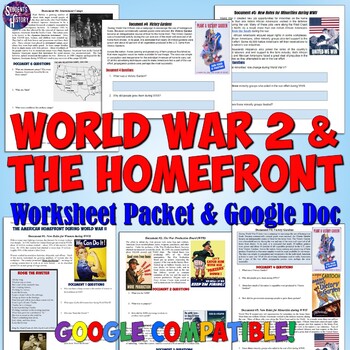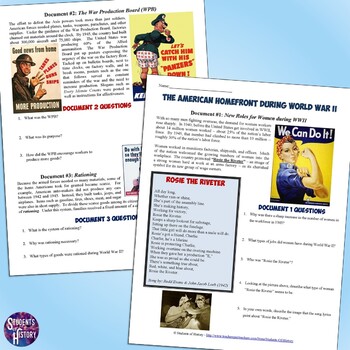World War 2 and the Homefront Document Analysis Project for US History
- PDF
- Google Apps™

What educators are saying
Description
This thorough packet includes 6 documents from the American homefront during WW2 along with background readings on each. Students analyze key information from short paragraphs, posters, and more to answer questions for each.
This is a fantastic overview of how life changed for Americans during the war. Included topics are the changing role of women, industrial production, rationing, victory gardens, changing roles for marginalized groups, and internment camps.
Each page includes great visuals, easy-to-understand readings, and essential questions based on state and Common Core Standards. An answer key is included for your convenience.
An editable Google Doc version is now also included along with an answer key for your convenience!
This is an excellent companion resource to this PowerPoint lesson on America during World War 2!
Thank you for looking!





